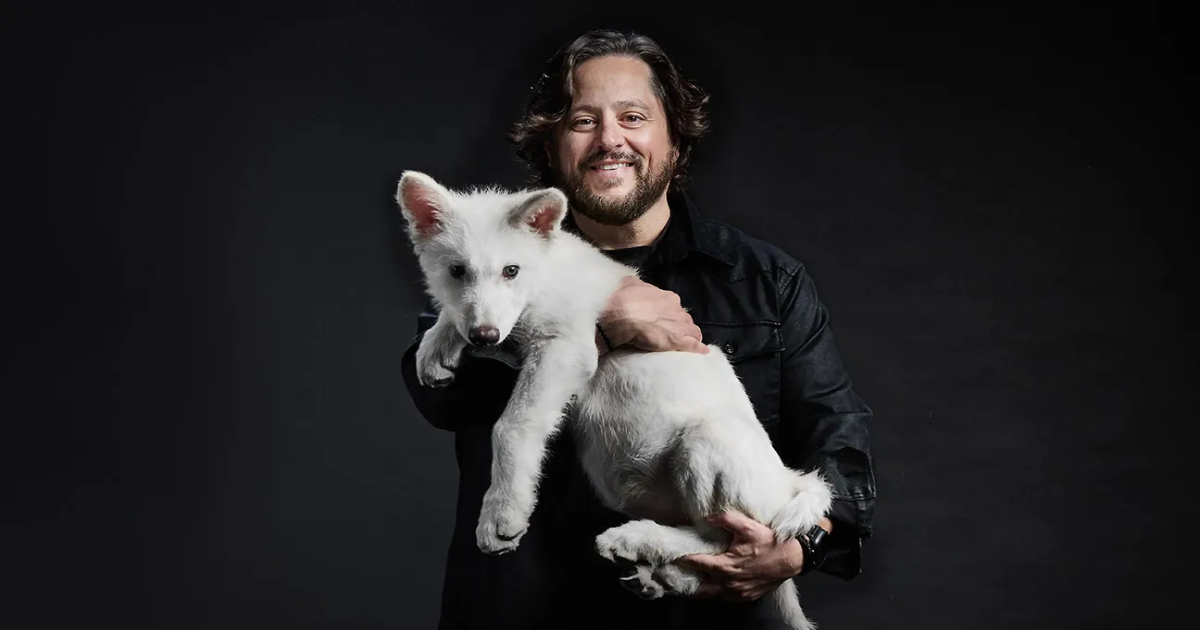Immortalized in Game of Thrones and on the crest of House Stark, the dire wolf is walking the Earth again and even howling after going extinct nearly 10,000 years ago.
As announced today by genetic engineering company Colossal Biosciences, the long-extinct canine — or at least a very close approximation of it — has been successfully brought back to life. The process was accomplished via DNA extracted from two fossils as well as 20 edits of the genetic code of a gray wolf, the species’ closest living relative, according to research carried out by Colossal, sometimes known as the De-Extinction Company.
Colossal says it has whelped three dire wolves and — using CRISPR technology — decided to select fluffy white fur for their coats, based on its new analysis that the original species had snow-colored fur. (A previous study, published in Nature in 2021, found evidence that dire wolves were not closely related to gray wolves.)
The Colossal company has named its two new male dire wolves — a pair of six-month old adolescents — Romulus and Remus, after the mythological twin founders of Rome, who were said to have been raised by a wolf. And in an homage to Game of Thrones’ Daenerys Targaryen, it’s christened a female puppy Khaleesi.
The trio are now living in an enclosed preserve of more than 2,000 acres at an undisclosed location. They are expected to mature at 130 to 150 pounds — by contrast, a typical gray wolf clocks in at about 80 to 100 pounds.
“Our team took DNA from a 13,000-year-old tooth and a 72,000-year-old skull and made healthy dire wolf puppies,” says Colossal CEO and co-founder Ben Lamm in a statement. “It was once said, ‘any sufficiently advanced technology is indistinguishable from magic.’ Today, our team gets to unveil some of the magic they are working on and its broader impact on conservation.”
In a twist that could only have been dreamed up by Hollywood, filmmaker Peter Jackson and Game of Thrones creator George R.R. Martin collaborated with Colossal Biosciences on today’s reveal of what the company is trumpeting as the first-ever de-extinction of an animal.
Jackson — who is an investor in the biotechnology company — loaned Colossal the official touring 330-pound Iron Throne prop that was used in promotions for the Game of Thrones series. Prior to today, it wasn’t known that Jackson owned it, as it sold last year in a bidding war for $1.49 million to a then-undisclosed bidder. For a glam photo shoot, Colossal flew Romulus and Remus to Dallas, Texas, and snapped them lolling on the fictional seat of power.

Dire wolf twins Remus and Romulus on the Iron Throne prop from Game of Thrones, loaned by owner Peter Jackson. Christopher Klee/Colossal Biosciences
Colossal reached out to Martin after it started work on its dire wolf de-extinction project. Not only did he sign on as a Colossal Biosciences cultural adviser and investor, Martin also flew to meet Romulus and Remus at their private preserve (which Colossal says has been certified by the American Humane Society).
Says Martin, in a statement, “Many people view dire wolves as mythical creatures that only exist in a fantasy world, but in reality, they have a rich history of contributing to the American ecosystem.”
While many fans of Game of Thrones likely think that dire wolves as fantasy beasts, they are in fact an actual animal that lived in the Americas and likely went extinct due to the disappearance of the large herbivores on which they preyed. At L.A.’s famed La Brea Tar Pits, fossil remains from more than 3,600 dire wolves have been discovered and the adjacent museum devotes an entire wall to displaying around 400 dire wolf skulls.
In tandem with genetically engineering its three dire wolves, Colossal has cloned two litters of red wolves, the most critically endangered wolf in the world, as part of its overall goal of pairing conservation efforts with its de-extinction efforts. The company, founded in 2021, has previously announced that it plans to bring back the woolly mammoth, the Tasmanian tiger and the dodo bird from extinction and says that its work on the dire wolf is a proof of technology. “This massive milestone is the first of many coming examples demonstrating that our end-to-end de-extinction technology stack works,” says Lamm, who co-founded Colossal with Harvard geneticist Dr. George Church.
Colossal — which claims that it has now set the record for the most-ever genetic edits in a living species — says it plans to restore the dire wolf as a viable species and secure ecological preserves for it on Indigenous land in North America.
